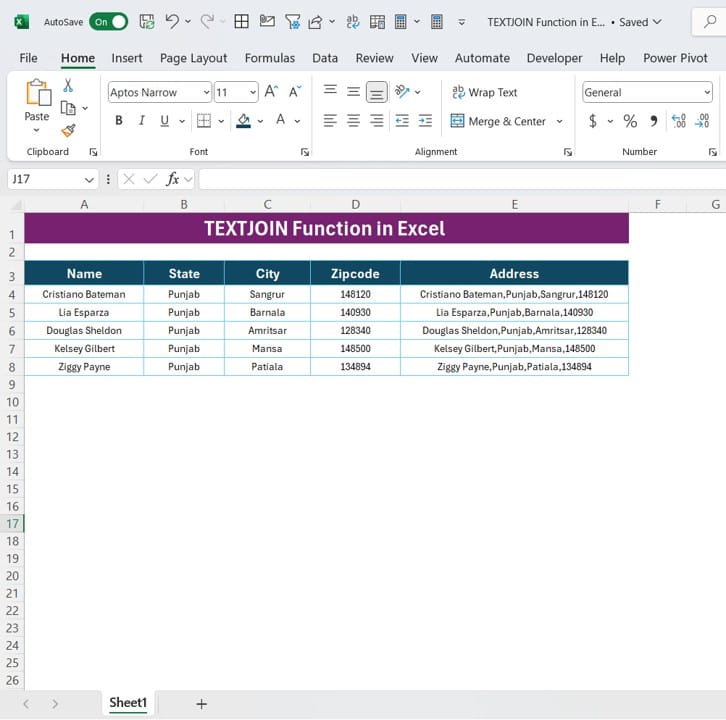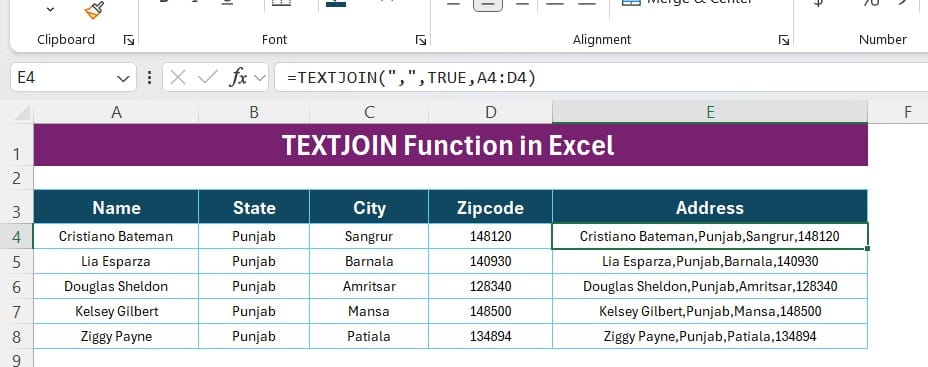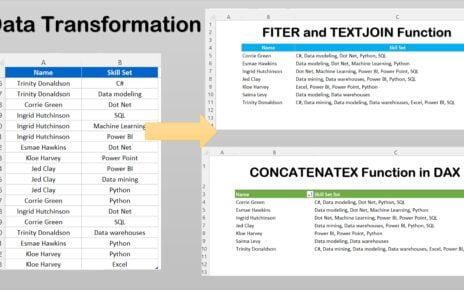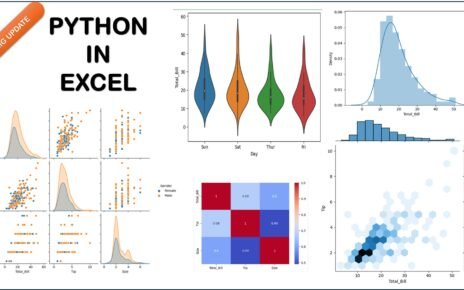Have you ever wanted to combine data from multiple cells into a single cell but didn’t know the easiest way to do it? Well, you’re in luck because Excel’s TEXTJOIN function makes this task super simple! In this blog post, we’ll explain what the TEXTJOIN function does, why it’s so helpful, and how to use it with a practical example. Let’s get started!
What is the TEXTJOIN Function in Excel?
Before we dive into the steps, let’s take a moment to understand what the TEXTJOIN function is all about.
The TEXTJOIN function in Excel is designed to combine, or “join,” the data from multiple cells into one cell. The best part? You can choose a separator (like a comma or space) and even skip empty cells. This function is a lifesaver for tasks like organizing addresses, creating item lists, or merging any type of data.
Why Use the TEXTJOIN Function?

You might be wondering, “Why should I use TEXTJOIN instead of typing everything manually?” Great question! Here are a few reasons why TEXTJOIN is amazing:
- Saves Time: Instead of typing out or copy-pasting data, TEXTJOIN does the work for you in seconds.
- Customizable: You can choose any separator, such as commas, spaces, or even slashes.
- Skips Empty Cells: It automatically ignores blank cells, so you don’t need to clean your data beforehand.
If you’ve ever felt frustrated trying to merge data manually, this function will feel like magic!
Step-by-Step Guide to Using TEXTJOIN in Excel

Here’s exactly how to use the TEXTJOIN function, step by step:
- Open Your Excel File: First things first, open your Excel file and make sure your data is organized. In our example:
- The Name is in Column A.
- The State is in Column B.
- The City is in Column C.
- The Zip Code is in Column D.
- Write the TEXTJOIN Formula: In the first empty cell of your new Address column (for example, E3), type this formula:
=TEXTJOIN (“,”, TRUE, A3:D3)
Here’s what each part of the formula means:
- “,”: This is the separator. It tells Excel to insert a comma between each piece of data. You can change it to a space (” “) or any symbol you prefer.
- TRUE: This tells Excel to ignore any blank cells in the range.
- A3:D3: This is the range of cells to combine. It includes the Name, State, City, and Zip Code.
- Copy the Formula Down the Column: Now, instead of typing the formula for every row, simply drag the formula down the column. Excel will automatically update the ranges for each row. Easy, right?
- Check the Results: Once you’ve applied the formula to all the rows, your Address column will look like this:
At this point, you can probably see why the TEXTJOIN function is so useful.
But just to recap, here’s what makes it awesome:
- Fast and Efficient: It handles data merging in just a few clicks, saving you tons of time.
- Flexible Delimiters: Whether you want commas, spaces, or custom symbols, TEXTJOIN can do it all.
- Cleans Your Data: By skipping empty cells, it ensures your results are neat and error-free.
Pro Tips for Using TEXTJOIN Like a Pro
Now that you know the basics, here are a few tips to make the most of TEXTJOIN:
- Double-Check Your Delimiter: Choose the separator that makes your data easiest to read.
- Test Your Formula First: Start with one row to make sure the formula is working as expected.
- Use Absolute References if Needed: If you’re combining a fixed range, lock the cell references with $ (e.g., $A$3:$D$3).
Frequently Asked Questions
Q: What happens if I don’t add a delimiter in the formula?
A: The data will be combined without any spaces or characters in between, which can make it hard to read.
Q: Is TEXTJOIN available in all versions of Excel?
A: Unfortunately, no. TEXTJOIN is available in Excel 2016 and later, as well as in Excel for Microsoft 365.
Q: Can I use TEXTJOIN with numbers?
A: Absolutely! TEXTJOIN works with both text and numbers, making it versatile for many types of data.
Wrapping It Up
The TEXTJOIN function is one of Excel’s most useful tools for combining data. Whether you’re working with addresses, lists, or any other information, it simplifies the process and saves you loads of time.
Why not give it a try right now? And don’t forget to check out our YouTube channel and blog posts for more helpful Excel tips and tricks. See you next time!
Visit our YouTube channel to learn step-by-step video tutorials
View this post on Instagram
Click hare to download the practice file



